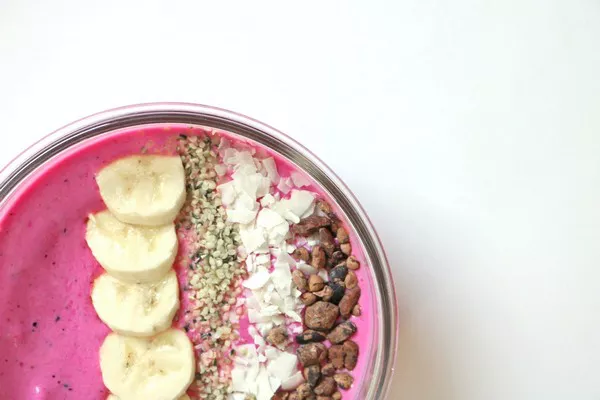Scars tell stories of healing and resilience, but for many, they also carry a desire for smoother, more even skin. In the pursuit of scar reduction, the market offers a plethora of options, including scar creams. This article delves into the world of scar creams, exploring their effectiveness, ingredients, types, application tips, considerations for making an informed choice and recommended brands.
The Science Behind Scar Formation: Understanding the Role of Scar Creams
Scars are the result of the body’s natural healing process after injury or surgery. When the skin is damaged, the body produces collagen fibers to repair the tissue. These collagen fibers form the basis of a scar. Factors such as the depth of the wound, genetics, and the individual’s healing process influence the appearance of scars.
Scar creams are formulated to target scar tissue, promoting a smoother and more aesthetically pleasing appearance. They typically work through a combination of moisturizing ingredients, skin-nourishing compounds, and specialized agents that aid in reducing inflammation and encouraging collagen remodeling.
Ingredients That Matter: Key Components of Effective Scar Creams
Several key cpmponents in scar creams contribute to their effectiveness:
1. Silicone: One of the most widely recognized ingredients in scar creams, silicone forms a protective barrier over the scar, hydrates the skin, and helps regulate collagen production.
SEE ALSO: Choosing the Best Silicone Gel for Scars: A Complete Guide
2. Vitamin E: This antioxidant-rich ingredient aids in skin regeneration and promotes the fading of scars. However, caution is advised due to the potential for skin irritation in some individuals.
SEE ALSO: 5 Vitamins with Effective Healing Powers for Scars
3. Hydroxy Acids: Alpha hydroxy acids (AHAs) and beta hydroxy acids (BHAs) exfoliate the skin’s surface, promoting cell turnover and helping reduce the appearance of scars.
4. Onion Extract: Known for its anti-inflammatory and antioxidant properties, onion extract has been shown to improve scar texture and color.
5. Cortisone: When included in scar creams, cortisone can help minimize inflammation and itching associated with healing scars.
Types of Scar Creams
There are three main types of scar creams:
1. Over-the-Counter (OTC) Scar Creams
Readily available at pharmacies and online, these creams contain a combination of active ingredients that aim to improve the appearance of scars. They are suitable for mild to moderate scars and can be a cost-effective option.
2. Prescription Scar Creams
Offered by dermatologists or medical professionals, prescription creams may contain more potent ingredients. They are typically recommended for more severe scars or when OTC options have proven insufficient.
3. Specialized Formulations
Some scar creams are formulated for specific types of scars, such as post-surgical scars, acne scars, or stretch marks. These formulations often target the unique needs of each scar type.
Over-the-Counter Scar Creams Recommended by Dermatologists
Dermatologists often recommend specific over-the-counter (OTC) scar creams for their patients, but it’s important to note that the effectiveness of these creams can vary from person to person, depending on the type and severity of the scar. Below are some OTC scar creams that dermatologists may recommend:
1. Mederma: Mederma is a well-known brand of scar creams that contains onion extract and is often recommended by dermatologists. They offer a range of products, including Mederma Advanced Scar Gel and Mederma PM Intensive Overnight Scar Cream.
2. ScarAway: ScarAway offers silicone-based scar sheets and gels that are commonly recommended by dermatologists. Their products are designed to flatten and fade scars over time.
3. Bio-Oil: While not specifically a scar cream, Bio-Oil is often recommended by dermatologists for scar management. It contains a blend of oils and vitamins that can help improve the appearance of scars.
4. Kelo-Cote: Kelo-Cote is a silicone-based gel that is known for its effectiveness in reducing the appearance of scars. It is often used and recommended by dermatologists, especially for surgical scars.
5. Cica-Care: Cica-Care is a silicone gel sheeting product that is used to flatten, soften, and improve the color of scars. Dermatologists may recommend it for various types of scars.
6. NewGel+: NewGel+ offers silicone-based gel sheets and strips that are designed to improve the appearance of scars. They are frequently recommended by dermatologists.
7. Strataderm: Strataderm is a silicone gel that dermatologists may recommend for scar management. It is suitable for a range of scars, including surgical scars and keloids.
8. Hiruscar: Hiruscar is a scar gel that contains a blend of ingredients, including allium cepa (onion extract), to improve the appearance of scars. It is often recommended for various types of scars.
9. Cicatricure: Cicatricure offers a range of scar creams and gels that are formulated to reduce the appearance of scars. Dermatologists may recommend them for scar management.
SEE ALSO: Scar Management: 9 Dermatologist-Approved Recommendations for Skin Healing
Effective Creams on the Market Designed for Scar Treatment
It’s essential to note that the availability of new scar treatment creams can vary by region, and the landscape of skincare products can change rapidly. Here are some scar treatment creams and products that were gaining attention in the scar management market:
1. Stratpharma Strataderm: This silicone gel was designed to improve the appearance of scars. It claimed to be quick-drying and suitable for both old and new scars.
2. RejûvaSil Scar Cream: RejûvaSil is a silicone-based cream formulated to reduce the appearance of scars. It was designed to be less greasy and more easily absorbed compared to traditional silicone gels.
3. Cimeosil Scar and Laser Gel: Cimeosil offers a range of silicone-based gels and sheets for scar management. Their Scar and Laser Gel was designed for use on surgical scars and laser-treated skin.
4. Scarless MD: Scarless MD is a scar cream that includes ingredients like peptides, antioxidants, and vitamins to promote scar healing and improve skin texture.
5. Embrace Active Scar Defense: Embrace is a unique, adhesive silicone sheeting system designed to be applied over closed surgical incisions. It is meant to minimize tension on the scar and improve healing.
6. Mepiform Silicone Dressing: Mepiform is a soft, flexible silicone sheet designed for scar management. It is self-adherent and can be worn continuously to reduce the appearance of scars.
7. Cicaclear: Cicaclear is a silicone-based scar gel that incorporates a blend of natural ingredients like centella asiatica extract. It was marketed as suitable for various types of scars.
8. Scarology 3-Step Scar System: Scarology offers a comprehensive system that includes an exfoliating scar gel, a silicone scar treatment sheet, and a natural scar cream. It is designed to improve the appearance of scars over time.
Application Techniques of Scar Creams
Here are some techniques to help maximize the benefits of scar creams:
1. Timing: Begin applying scar cream once the wound has healed and the skin has closed. Starting too early can interfere with the natural healing process.
2. Consistency: Regular and consistent application is key to seeing results. Follow the recommended usage instructions provided on the product packaging.
3. Clean Skin: Cleanse the scar area gently before applying the cream to ensure the skin is free from dirt and debris.
4. Massage: Gently massaging the scar during application can help improve blood circulation and aid in the absorption of the cream.
5. Sun Protection: Protect the scar from sun exposure by using sunscreen or covering the area with clothing. UV rays can darken scars and hinder the healing process.
6. Patience: Scar reduction takes time. Be patient and continue using the scar cream as directed to see gradual improvements.
Considerations When Choosing a Scar Cream
To make informed decisions, you may take these into considerations:
1. Severity of the Scar: The type and severity of the scar influence the choice of scar cream. More severe scars may require prescription-strength formulations.
2. Skin Sensitivity: Consider your skin’s sensitivity and potential reactions to certain ingredients. Perform a patch test before applying the cream to a larger area.
3. Ingredients: Research the ingredients in the scar cream and consult a dermatologist if you have any concerns about potential side effects or allergies.
4. Personal Preferences: Some individuals prefer fragrance-free, natural, or cruelty-free options. Choose a scar cream that aligns with your personal values and preferences.
5. Consult a Dermatologist: For severe scars or if you’re unsure about which scar cream to use, consult a dermatologist. They can provide personalized recommendations based on your skin type and scar characteristics.
Conclusion
Scar creams offer a promising avenue for individuals seeking to minimize the appearance of scars and enhance their skin’s texture. By understanding the science behind scar formation, exploring the key ingredients in effective scar creams, navigating different types of scar creams, and adopting proper application techniques, individuals can make informed decisions about their scar reduction journey. Remember that while scar creams can contribute to scar improvement, patience, consistency, and a holistic approach to skin care are essential elements on the path to achieving smoother, more confident skin.
[inline_related_posts title=”Related Topics” title_align=”left” style=”list” number=”3″ align=”none” ids=”1945,1942,1915″ by=”categories” orderby=”rand” order=”DESC” hide_thumb=”no” thumb_right=”no” views=”no” date=”yes” grid_columns=”1″ post_type=”” tax=””]



































